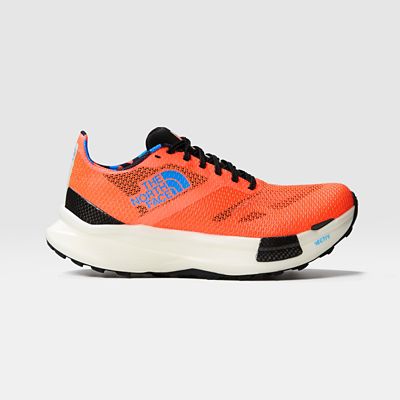The North Face Summit VECTIV™ Pro Artist – Test & Review
The metarocker effect of the shoe’s sole made the ascent up one particular section feel easier underfoot and gave the natural effect of a slightly forward propulsion, a real plus point.
Over the last five years that I’ve been running, I’ve taken on all sorts of terrains, distances and weather over all seasons. The ability to tweak what goes into my kit bag and what I put on has come from the experiences I’ve had doing multiple mountain, fell, hill, road and sand dunes on over a hundred ultras to date.
Whilst my preferred terrain will always be the mountains, such as Snowdon Ultra®, and the scenic hills and forest trails found on the likes of Race Across Scotland®, I’m more than happy to throw myself at a mostly tarmac Ultra such as the National Three Peaks Ultra if it means challenging myself to go way beyond my comfort zone. However, I’ll always look to arm myself with the best tools available to help me achieve my goals more comfortably, especially as I’m not superfast and therefore will spend much more time on my feet than the fast guys in the lead.
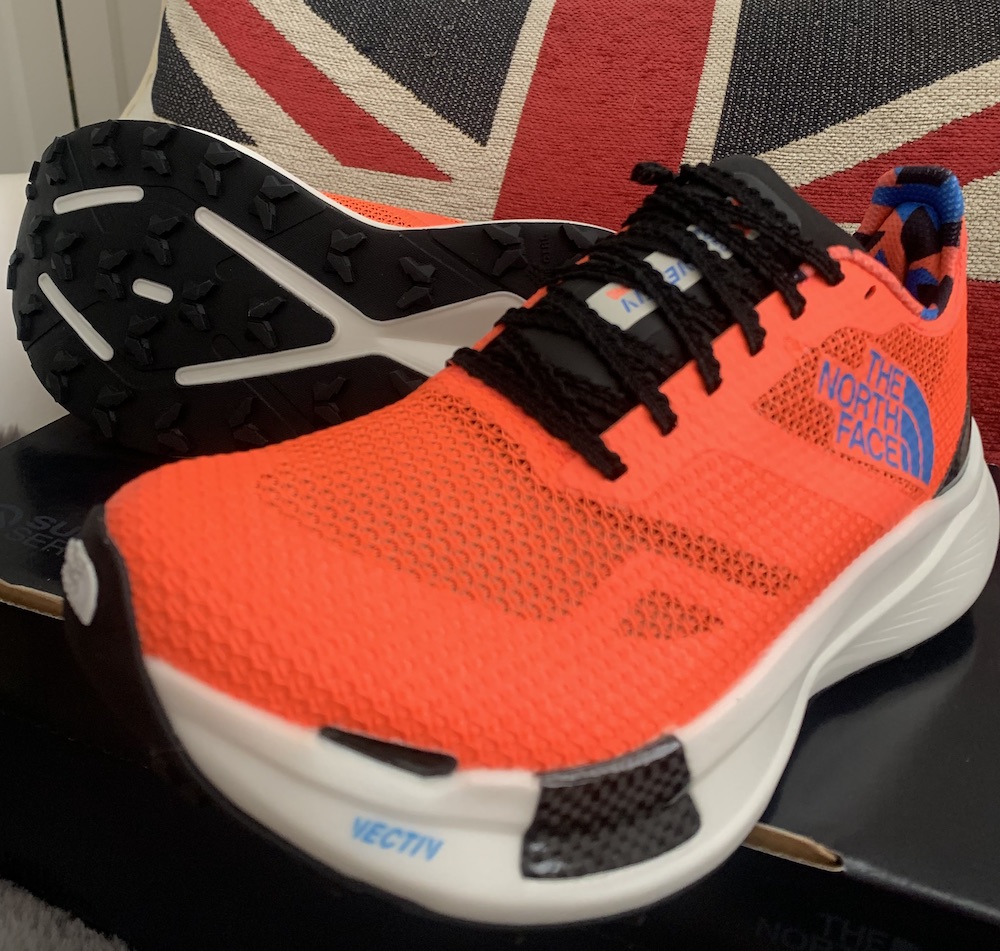
So when I was given the opportunity to test the new The North Face Summit VECTIV™ Pro Artist Trail running shoe I jumped at it. I have had a couple of carbon plated shoes for road work for a while, using them to do a full tarmac 50-miler and finding them incredibly comfortable and energy responsive, negating any of the traditional post run aches and pains associated with long spells thumping the hard ground. I was therefore intrigued to see how the technology would play out in a dedicated trail shoe.
The shoe is built around their trademarked 3D VECTIV™ carbon footplate and a ‘superfoam’ all pointing towards delivering a super smooth ride, so to say I was excited and keen would be an understatement.
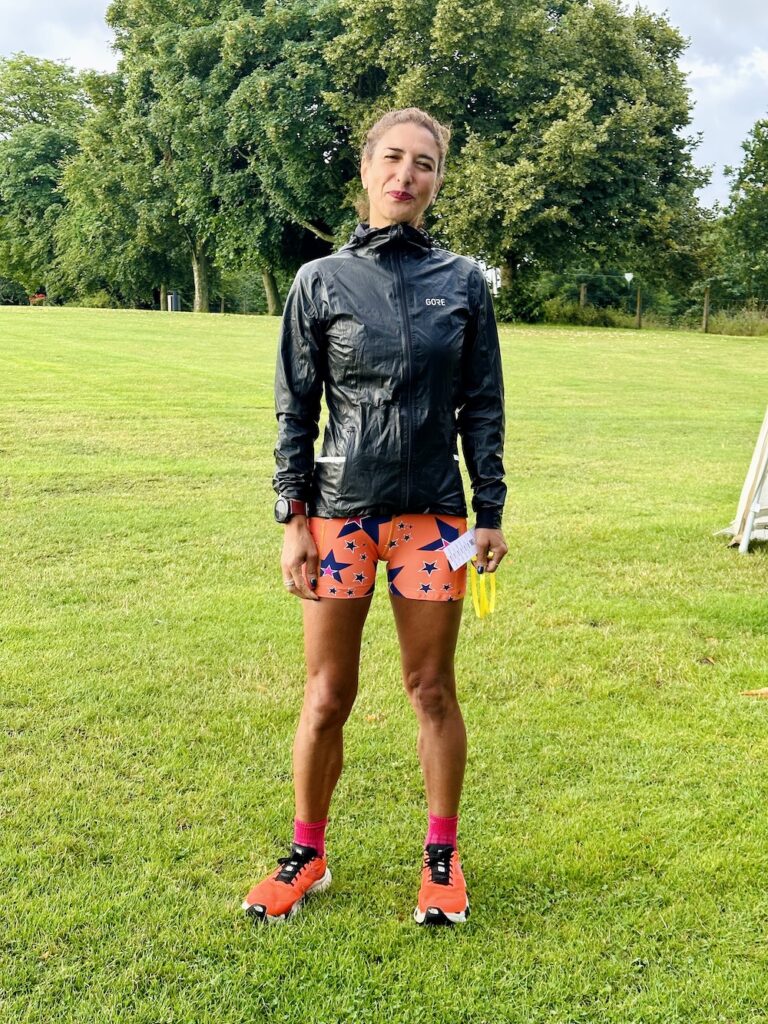
Out of the box the first thing I noticed beyond the bright neon orange, black and white colourway which I loved, was how lightweight the shoe is. The mesh weave across the top of the toe box is quite large and I could clearly see my sock through it when I popped the shoe on. Not only does this make the shoe very breathable, I imagined that any water getting into the shoe would drain away quickly and easily reduce any potential ‘trench foot’ scenarios on long wet days; a real issue which plagues many trail runners.
There also appeared to be ample reinforcement across the front of the shoe which looks robust enough to take on and survive bramble, rock and jagged stone encounters. The shoe is also very cushioned, there’s a good inch and a half of super light foam built around the carbon footplate pointing to a great all day and all-night shoe, ideal for the long stuff, i.e. 100+ milers. I also noted that the lugs and tread were a lot shallower than I’m use to at only a depth of 3.5mm and so at first glance I was curious to see what effect this might have out and about in variable conditions.
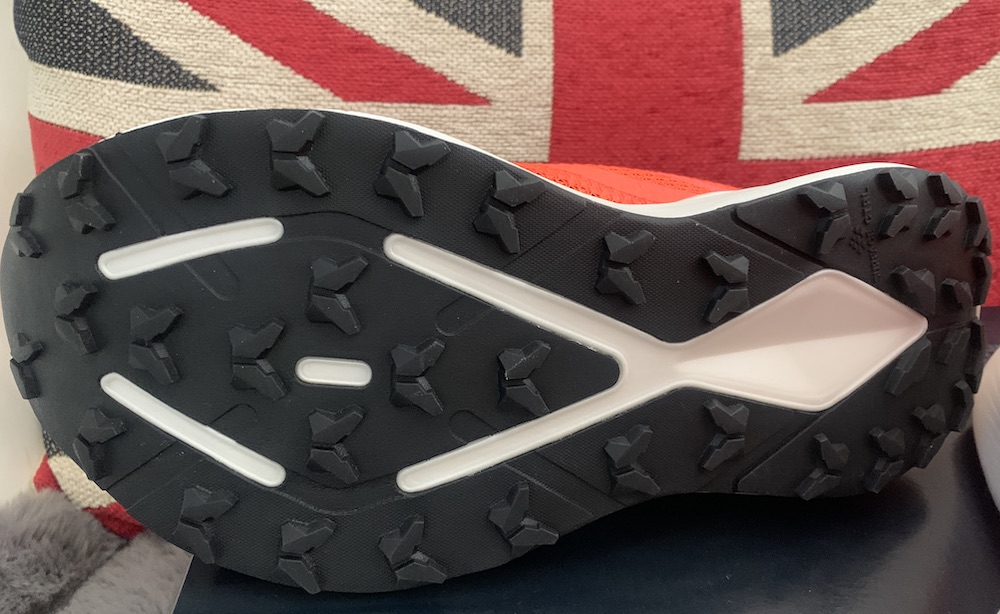
I decided to try them out over two weekends. The first time was at the Hope Trail Festival, my reasoning being that I’d never worn a shoe like the VECTIV™ Pro on the trail (I am wholly committed to my Salomon Sense Rides) and the 5-mile looped course at the festival would enable me to change out of them if, for any reason, they just didn’t suit or gave me any issues. I’m generally quite lucky not to suffer with the traditional foot issues that affect many of my fellow runners, particularly in wet, boggy conditions, and rarely get blisters or hot spots. But I do know through trial and many errors which brands of shoe suit my narrow foot, almost compulsively sticking to them. So The North Face shoes were unchartered territory in terms of running kit.
The Hope trail is a lovely 5-mile circular over forest trails, all hard packed loose gravel, grass or earth trail, which gently undulates with nothing technical. There had been little to no rain in the preceding week, so the trail was bone dry. Although we had some drizzle over the course of the day and night, the ambient temperature meant that the trail never wetted out and remained consistently dry and solid throughout. And so, I popped on the VECTIVs and very happily ran a super comfortable 30 miles in them.
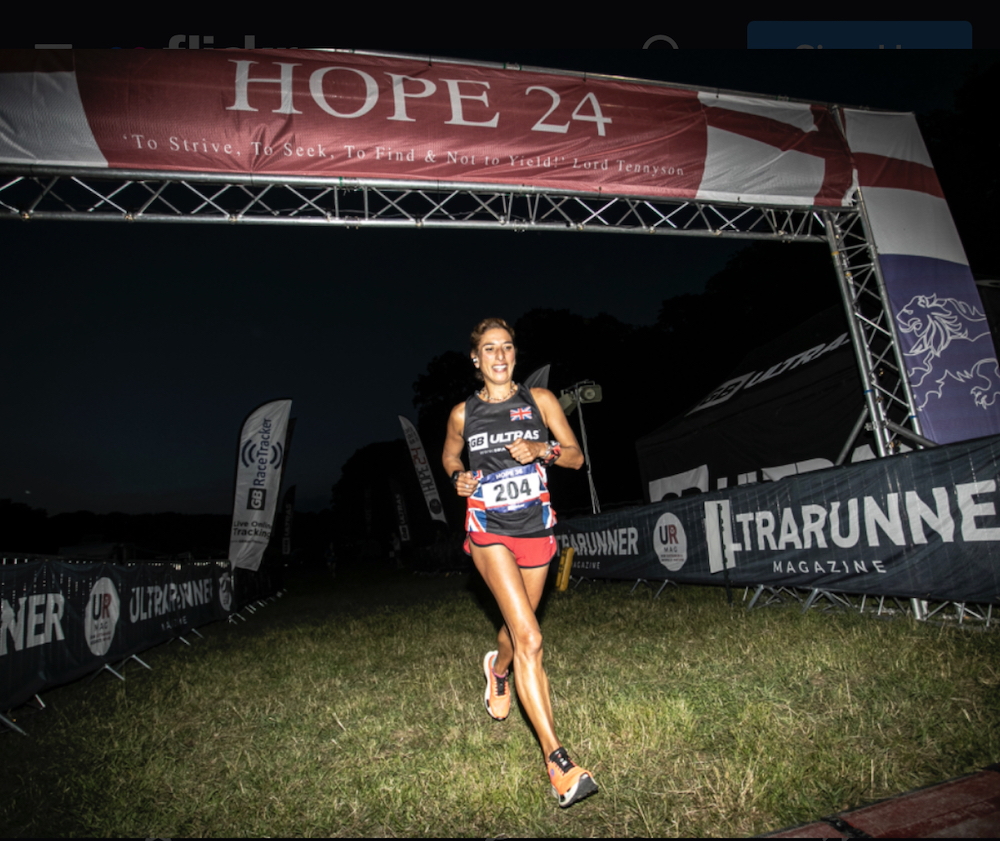
The shoe gripped well on the loose gravely surfaces and windy earthy tracks. They enabled me to skip across exposed tree root sections and hop confidently from rock to rock, propelling myself full speed down the couple of short but sharp descents with ease. The shoe seemed to hug the entire foot and locked my heel into place. There’s not much feel of the ground beneath you and for a long, solid, non-technical trail I feel this works in its favour. The metarocker effect of the shoe’s sole made the ascent up one particular section feel easier underfoot and gave the natural effect of a slightly forward propulsion, a real plus point.
All was going well. However, I’d made the rooky mistake of not taking a closer look at the shoe prior to popping them on, and the higher heel tab on the back of the shoes by mile 30 had worn at the exposed skin on my achilles (I’d only bought shoe liner type socks with me). The heel tab on the back of the shoe, I suspect, has to be higher than usual to support and lock in the heel as the metarocker motion would otherwise have them slipping straight off your feet.
Other than this small hiccup, I found them supremely comfortable, noted the energy return and little power boost on each foot strike and would have happily worn them straight out of the box for the whole 75 miles if I’d bought the correct socks!
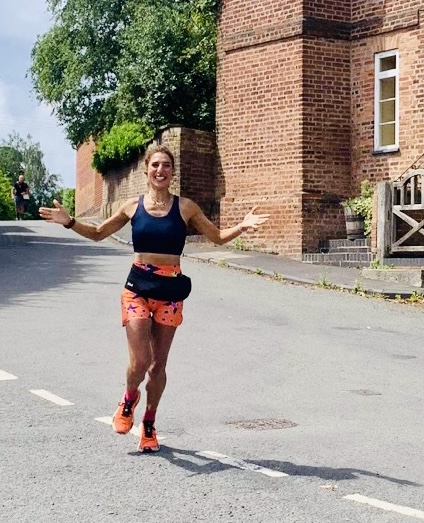
The following weekend I resolved to put them to the test again on a 40-miler taking in the Worcestershire Way. We had had rain in the lead up to the day of the event and on the actual run we experienced several sharp downpours and a hefty storm interspersed with periods of glorious sunshine. Perfect conditions for a day on the trail!
Hallow 12 Parish Challenge takes in fields, tarmac, riverbanks, forest trails and hills over its 40 mile course. I popped on a decent pair of double skin ankle socks to ensure there would be no direct contact shoe to skin to prevent them chafing and once again the Vectivs felt immediately comfortable, hugging my foot securely and assisting the natural forward propulsion with each stride.
The first 10ish miles of the course are relatively flat and the light shoe drove me forward over the grassy riverbanks, tarmac sections and a couple of field tracks effortlessly. The sun shone and the ground was dry and hardpacked and the shoes performed brilliantly. The carbon plate technology meant that it really did feel as though I was getting energy return from each footfall, literally bouncing along, and I felt like I could run in them forever.
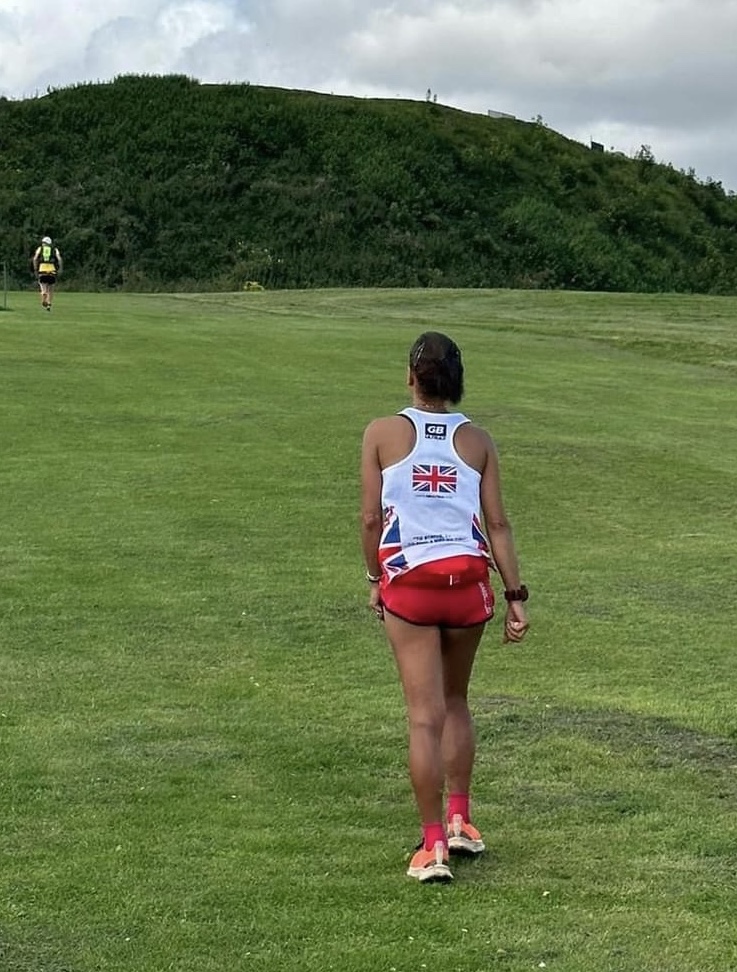
Then I hit my first muddy section. It was a good 10 metre stretch of glorious mud, inches deep, which had accumulated under a bridge at the end of a field of cattle. And as I tried to run across the middle of the mud puddle I felt my right foot slip from under me. OK, I thought, maybe I’ll just walk this bit.
Beyond the bridge I found myself on a track alongside a field with long grass to the side and as I scuffed my way through it the mud magically fell away from the shoes and came away clean. Result! As suspected, the super lightweight structure of the shoe is great at shedding debris and water and therefore at remaining nice and light.
On the tarmac the shoes gripped beautifully and I actually quiet enjoyed how light I felt on these, my least favourite, sections. I think the carbon plating comes into its own on the hard surfaces and takes the potential ‘thud and pounding’ out of the ride, enabling me to run faster than I would in a traditional trail/hybrid shoe.
At about halfway round and just as I was about to hit the Worcestershire Way section we had the first of several big downpours. This added to the water that had lain on the course over night and created a nice centimetre or so of slick mud over the hills and tracks, through crops and undulating forest tracks on the remaining 20 miles. Here I found that the shoes just weren’t ‘luggy’ enough; the 3.5mm depth just didn’t cut it on the mud. I had to pull back on the descents otherwise I was going to end up in the undergrowth or overshooting the trail as I skated into hedges in places. This is something I never do on descents; I enjoy being able just to relax into the freefall and allow my legs to stretch out fully. This was the only downfall to an otherwise great shoe which I had been able to wear straight out of the box for many miles up until this point.
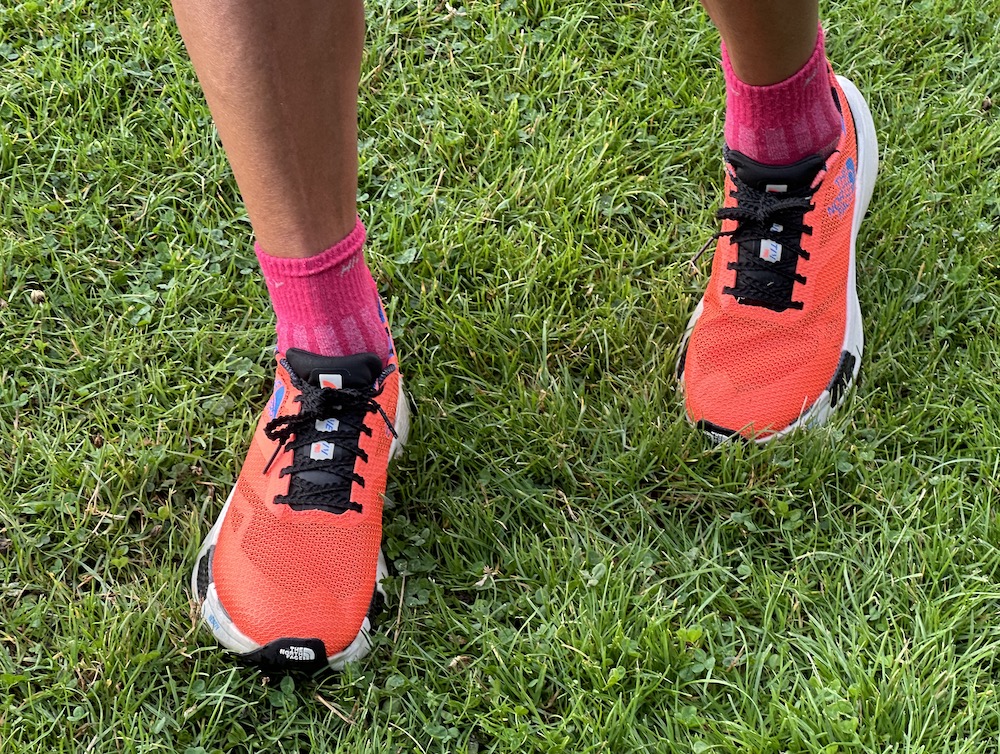
Overall, though, I really liked them. I will continue to wear them for the long stuff, on dry days, where I know the trail has not seen rain for a week or so. They were completely comfortable: I suffered no blisters or hot spots; they locked my heel securely in place; they were very breathable and kept my feet really cool in quite warm conditions.
For wet conditions, if there are water crossings on the course I’m running, I know they will drain brilliantly and as long as the trail is dry elsewhere, they will be a top choice. But for muddy conditions, I’ll continue to opt for a shoe with a heftier lug to ensure grip so I can continue to hurl myself down the descents with wild abandon. I’m also not sure how they would perform on more rocky, technical trail and would maybe continue to use a less cushioned trail for mountain Ultras where I just prefer to feel the ground beneath me and to be able to wrap my feet around the irregular contours of the trail. But for the type of trails I hit over the last fortnight they were great.
At £225 (RRP at the time of writing), the shoe is expensive compared to other trail shoes available. But personally, I think the tech innovation you are paying for make them well worth their price tag.
In fact, if The North Face produced exactly the same Summit VECTIV™ Pro shoe but with deeper and grippier lugs on the soles, I’d truly be 100% converted and inclined to use them for pretty much all my runs knowing that as an addition to my toolkit they would undoubtably improve and make my runs more enjoyable.
Review by Sara Fabien
The North Face
Summit VECTIV™ Pro Artist Trail Running Shoe
£225.00
